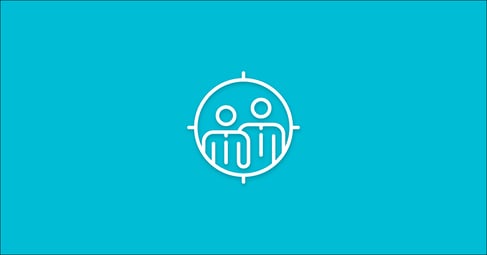Written By:
Tim Stobierski
We’ve all been there: The end of the quarter is approaching, but you still haven’t hit your quota and your prospects don’t seem interested.
Even if you’re using a CRM to streamline your pipeline and you’re prioritizing your outreach, you’re always going to run into a lull in business from time to time. The good news is, that even in these times, there are ways to stir up new business.
Your existing clients can be a wellspring of new business, especially if they are lovers of your brand. Here are three easy ways that you can leverage your existing clients to bring new customers into the fold.
1. See if existing clients want to upgrade.
This strategy only works if your business has made improvements or changes to the products and services offered—after all, a client can’t upgrade if there isn’t an upgrade available. That being said, if you’ve recently improved your offering, convincing existing clients to upgrade can be an easy to pad your pipeline when things get a little slow.
For this to work, there are a few things you should keep in mind. First, clients and customers who are happy with the product or service you provide are obviously more likely to upgrade or expand their business with you than customers who are not so happy. That doesn’t mean you can’t reach out to unhappy clients—after all, your upgrade may address whatever issues they’ve had with your product in the past—but they shouldn’t be your top priority. Instead, focus on the clients who love what you offer, the ones who get excited about their partnership with you. It’s a lot easier to sell to a fan than to anyone else.
Take the Guesswork out of Inbound
You also need to keep in mind how much your new product or service differs from the one your clients are currently using. If the product they have now is working fine, they may not see the value in making the switch to a newer version. On the other hand, if your new version comes with a lot of bells and whistles, or specifically addresses an issue that they’ve had to deal with in the past, it’s more likely that they’ll make the switch.
2. Ask clients for referrals.
No matter the industry they work in, your clients are likely in touch with friends or colleagues at other companies. If your existing clients love the product or service that you provide, then chances are they would be more than happy to refer you to these contacts.
To understand why these referrals are literal goldmines for your business, here are a few statistics from Nielsen on the subject:
- People are more likely to buy when they are referred to a product or service by a friend—up to four times more likely.
- Personal recommendations from family, friends, or colleagues are the most trusted source of information for buyers: 84% of consumers say that they either completely or mildly trust these recommendations.
- Almost 77% of buyers are more likely to make a purchase when they learn about a new product from family or friends.
So, what’s the key takeaway here? It’s that personal referrals work because they are trusted. If your clients can refer you to a friend or colleague at another company, you are more likely to walk away with a sale simply because of trust. It’s the “Well, Mark wouldn’t recommend them if they weren’t worth the money” line of thought.
Want an added benefit? Even if these referrals don’t lead to sales right away (whether it’s due to budget constraints, seasonality, or any other factor) you’ve got your foot in the door and you’ve planted the seed, meaning you have a greater chance of landing the sale when they decide they are ready to spend the money.
3. Keep track of your cheerleaders.
Remember Mark? He was a part of the team over at XYZ Company and loved everything that you did to help them grow their business. If you ever came close to having your own personal cheerleader, it was probably him. Whatever happened to him? He left XYZ a few years ago and you don’t know where he landed, but wouldn’t it be great to have him on your side at his new company?
If one thing is true from business to business and from industry to industry, it’s this: People move around. They go from one company to another. While this can be a negative for you as a seller (since that means you may have to build a brand new relationship with a new employee that works for your client) it can also be a major asset, especially if we’re talking about someone like Mark who loves your service or product.
Simply put, employees that move around can be your foot in the door at countless new companies. They can become emissaries of sort, funneling you business and contacts as they land in new positions. When you find yourself a cheerleader, you’ve got to keep track of them, even if they no longer work for your client.
Always Have a Fallback
When you’ve got holes in your pipeline, there’s no need to panic or resign yourself to the fact that you won’t be hitting your numbers. As long as you’ve got a backup plan, even if everything else fails, you’ve got a path forward. Existing clients are one great tool in your arsenal; if you can leverage them correctly, you’ll never miss your targets again.








